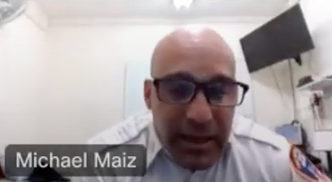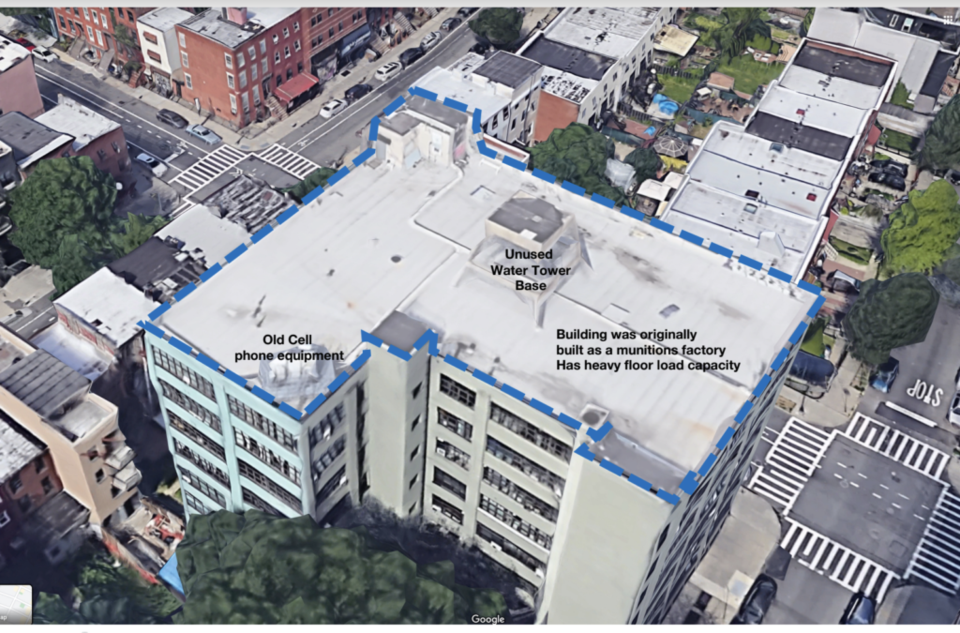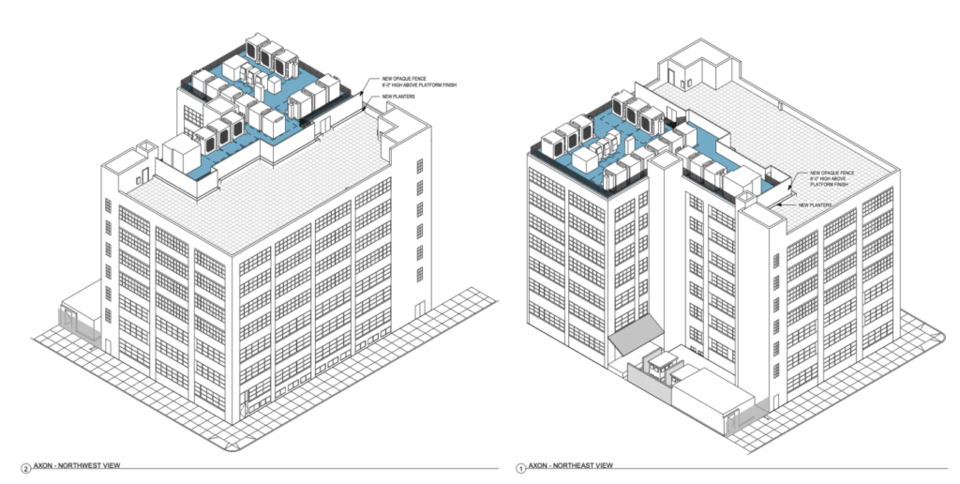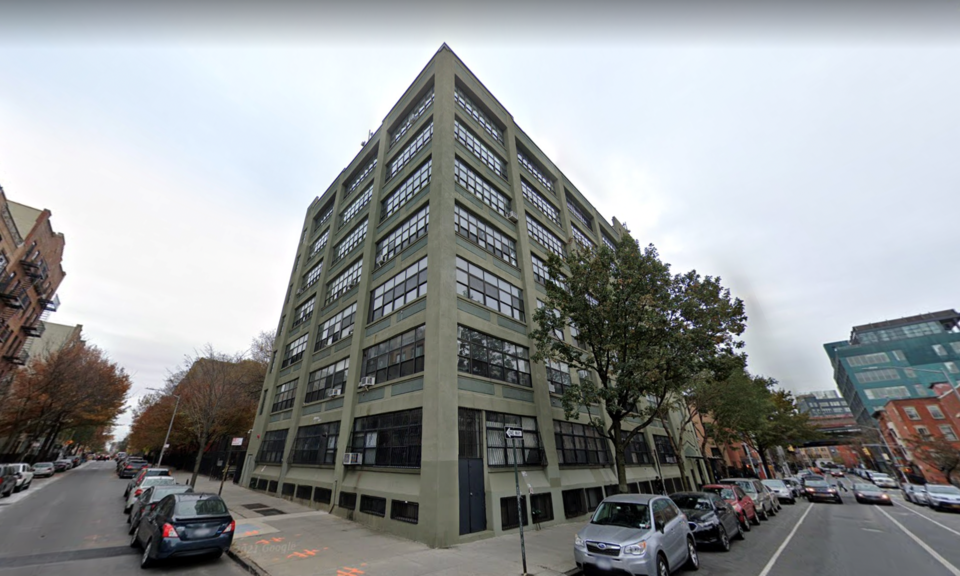Williamsburg residents say they are scared of living in a building with a lithium-ion battery storage system on their roof, even after meeting with FDNY representatives who sought to assure them of its safety Tuesday.
The FDNY appeared at a Brooklyn Community Board 1 meeting Jan. 10, to address residents' concerns about a proposal to install 15 lithium-ion batteries on the roof of 315 Berry St.
Energy company MicroGrid Networks is applying for a special permit for the project from the NYC Board of Standards and Appeals. The building's residents are fighting it.
If approved, it will be the first large-scale battery storage system placed on a residential rooftop in New York City, part of a larger push to meet New York’s green energy goals.
Berry Street residents ask FDNY how it would fight a battery fire
The FDNY has given the project a "letter of no objection." However, on Tuesday, it faced questions from Williamsburg residents fearful about how it would handle a fire on their rooftop if the worst should happen.
Residents' questions included how long the FDNY's response time would be in case of a fire, how much experience they had putting out large lithium-ion battery fires, whether the roof could handle the amount of water needed to put out a fire and what might happen if the batteries were struck by lightning.
One of the most frequent questions was how the firefighters would handle a large-scale lithium-ion battery fire experiencing thermal runaway, one of the primary risks related to lithium-ion batteries. Some residents pointed to the spike in e-bike fires across the city.

Thermal runaway is a chain reaction that happens within a battery that can make fires extremely difficult to put out.
FDNY Battalion Chief Michael Maiz reassured the meeting attendees that the Fluence batteries proposed for the 315 Berry St. rooftop were "completely different" to unregulated e-bike batteries.
He added that all energy storage system batteries approved by the FDNY undergo rigorous evaluation and testing. NYC has some of the strictest energy storage system rules in the country, he said.
"We don't just let them install anything," he said. "We care about our civilians and our firefighters, too."
However, if the worst-case scenario were to happen, "with all lithium-ion batteries, it's water, water, water," Maiz said.
315 Berry residents not convinced by MicroGrid's engineers' reports
If the battery system were to catch fire, it would require an estimated 30,000 gallons of water per hour to extinguish it, the FDNY said in BSA filings.
Residents on Tuesday doubled down on fears that their roof — which they say already leaks rain — could not handle the water weight. MicroGrid has supplied letters from two engineers who say the building can handle the weight. But the residents remain unconvinced.
"We live in the building, and if you have to put 'water, water, water' to continuously put this out, even if it's modestly on fire, it's going to take a lot of water, it's going to risk the roof falling on us and it's going to flood everyone's homes," Louise Belcourt said.
"We're stuck like guinea pigs, it seems bizarre that this could be happening."

Chief Maiz said the FDNY was not there to push the project on the residents and reiterated that it was up to the BSA whether it was approved. Residents expressed they felt "passed around" between city departments.
Regarding fire safety, Maiz wanted to inform residents that firefighters normally get to a fire "within minutes." He added that if an energy storage system is overheating, there is typically advance warning given through the system, too.
However, he said the department was "still learning."
"Our experience with the batteries is in dealing with the e-bike fires," Maiz said. The FDNY attends about five to seven per day, he said.
Williamsburg residents who spoke after listening to the FDNY assurances on the project said they still felt unsafe living near the batteries.
"I have a lot of faith in the FDNY... But I can't wrap my head around agreeing to something in a residential area," Sonia Iglesias, who lives nearby, said.
"You're still learning, it's not a comforting thing."
Project driven by state clean energy plan
The community board has issued a recommendation against the approval of the special permit. The BSA was meant to enter hearings on the proposal last week, but MicroGrid postponed while waiting on a review from the NYC Department of Environmental Protection, it said.
MicroGrid has spent nearly $400,000 lobbying city officials since 2020, Gothamist reports. However, the company said that spend was for the many projects it is working on both in NYC and upstate, not only for the Berry Street project.
MicroGrid Chief Operating Officer Tim Dumbleton told BK Reader this week the 315 Berry St. project would be the fifth rooftop energy storage system in NYC that he knows of.
"The members of CB1 seem to think this is a unique project, but it is one of many that are advancing in the city permitting processes and will be built in the next several years," Dumbleton said.
However, the BSA told BK Reader it was not aware of another site that "has this type of facility" on a residential building in New York.

New York has named energy storage as an important component of the its clean energy plan, with an energy storage goal of 6,000MW by 2030 and 12,000MW by 2040.
The 315 Berry St. project would add 3 MW of storage to Con Edison's Water Street Substation in Williamsburg, one of the utility's networks deemed most in need of energy load relief in New York City.
"[MicroGrid] is now on target to complete 40MWh of projects in the next several months including 20MWh in East Williamsburg," Dumbleton said.
The application comes as the Adams administration plans to make regulatory text amendments that would give battery storage systems "as of right" status throughout the city, removing the need for companies to get a special permit from the BSA.
A recent report says the mayor hopes to have all of the proposed regulatory text amendments for the plan complete within 12-36 months.
The hearing date for the 315 Berry St. proposal has been adjourned to March 27 and March 28.




